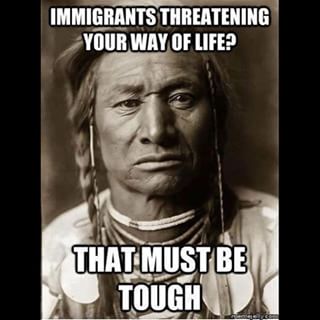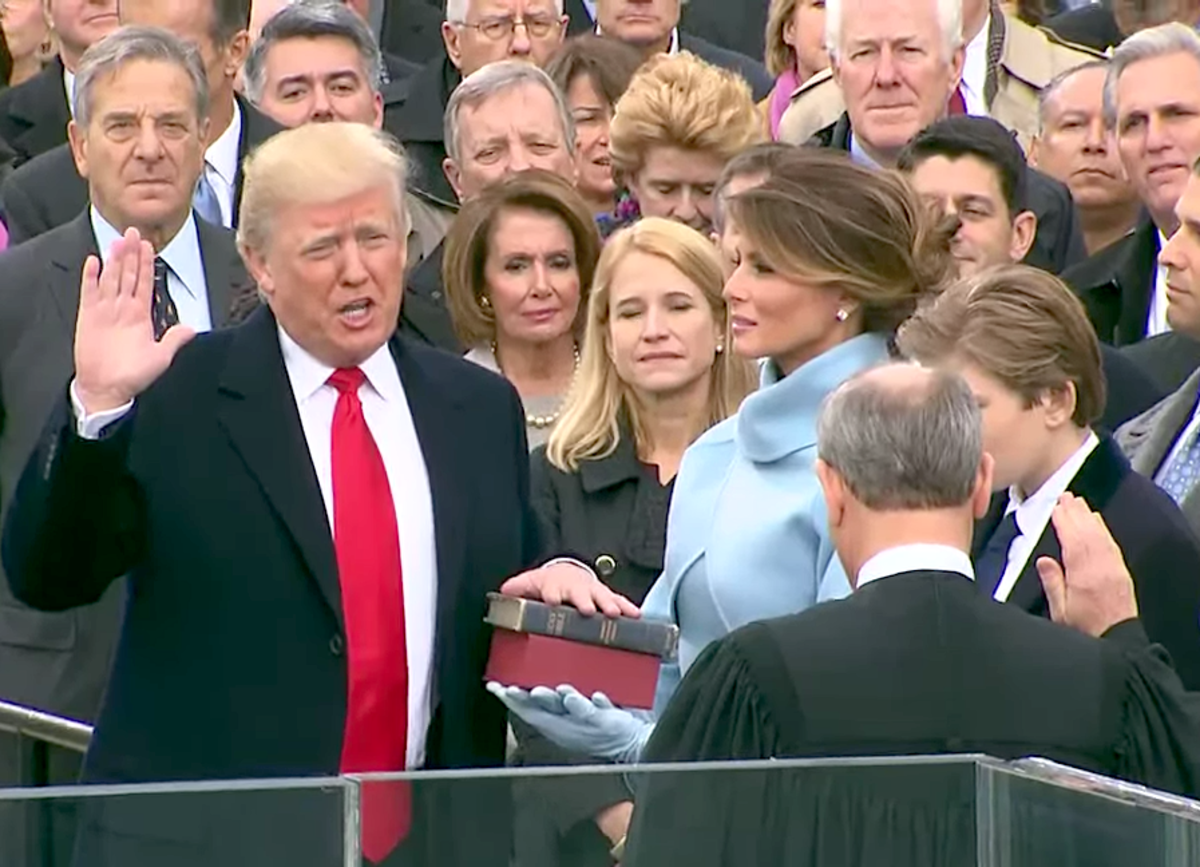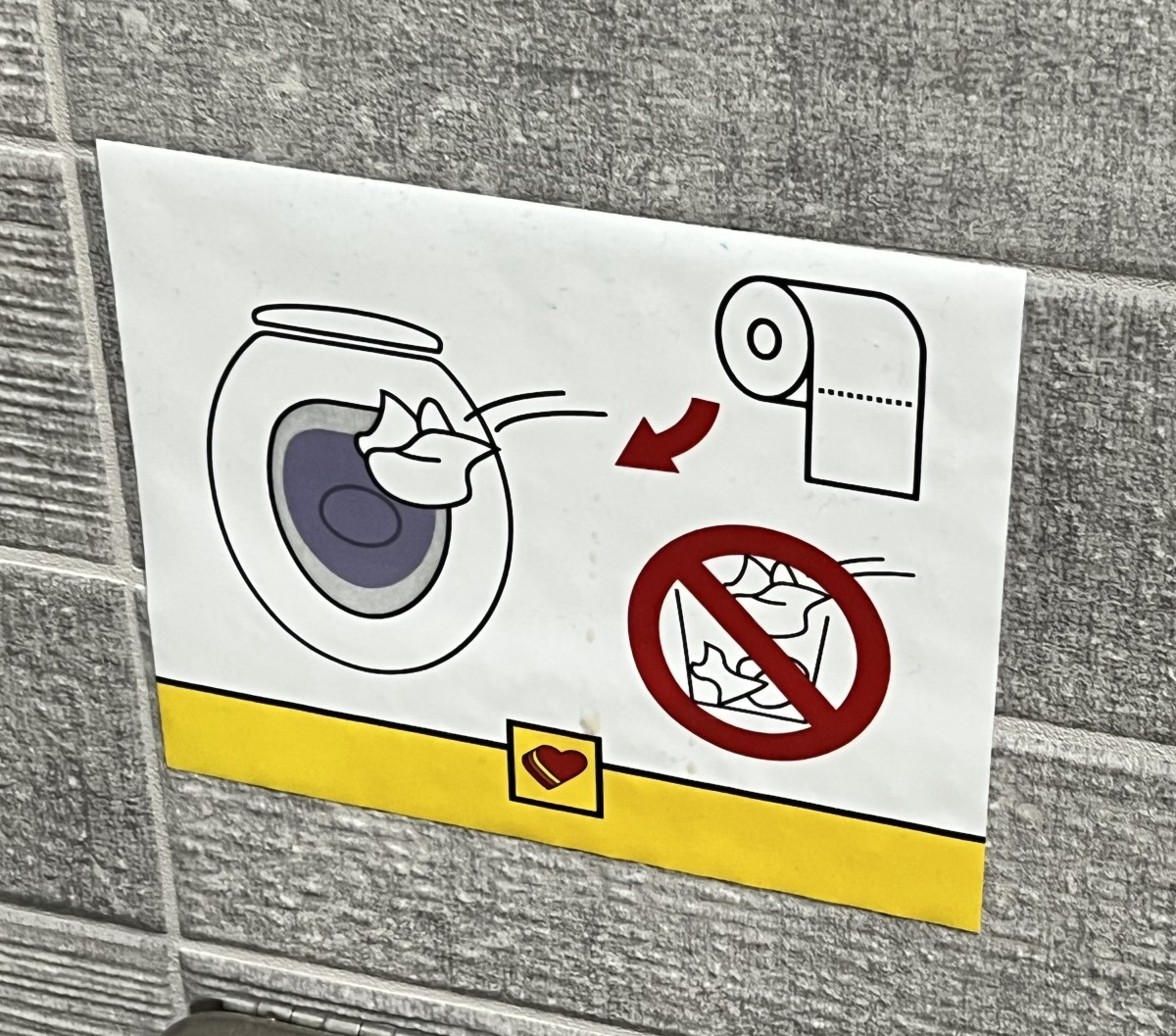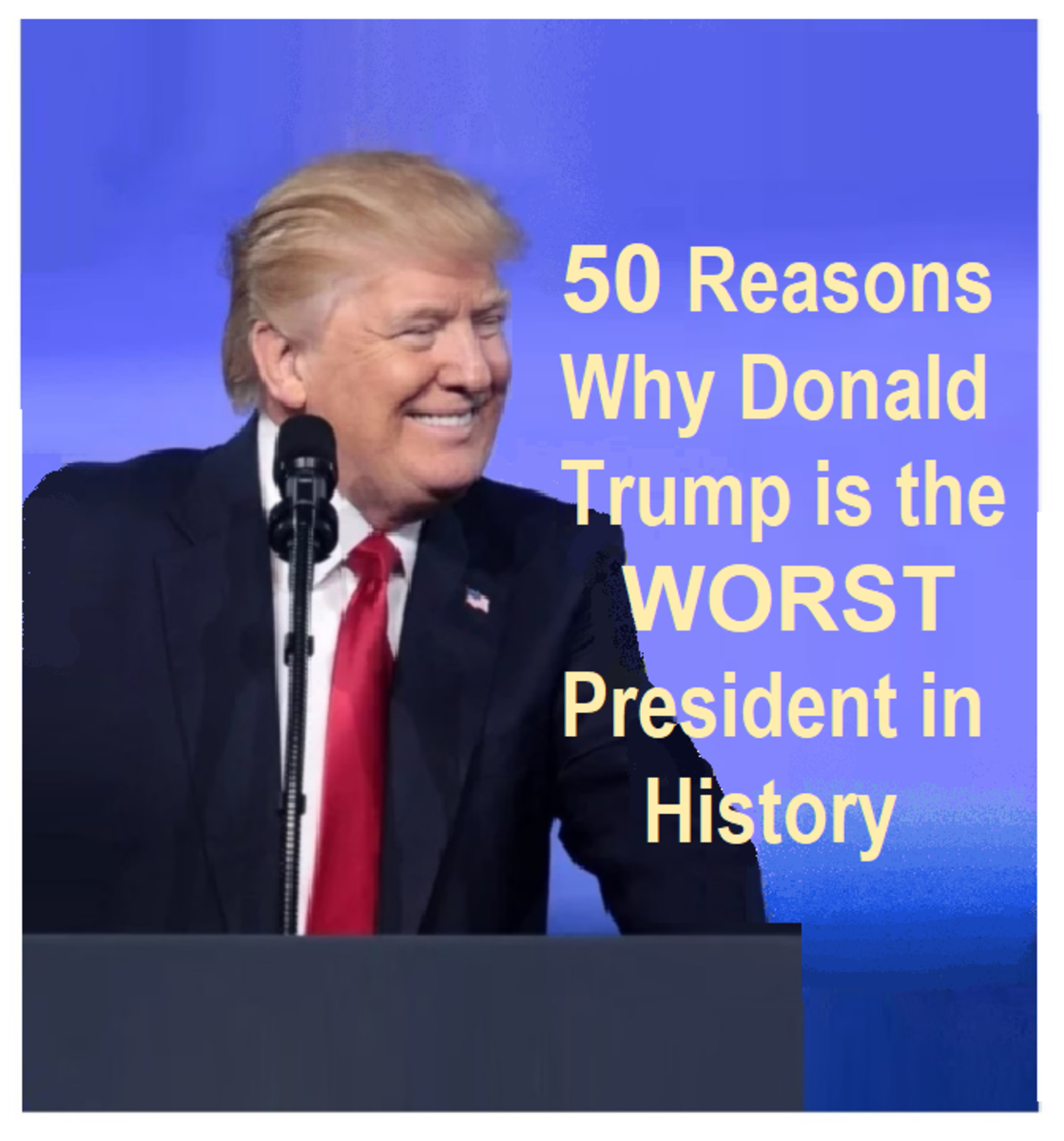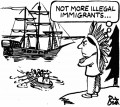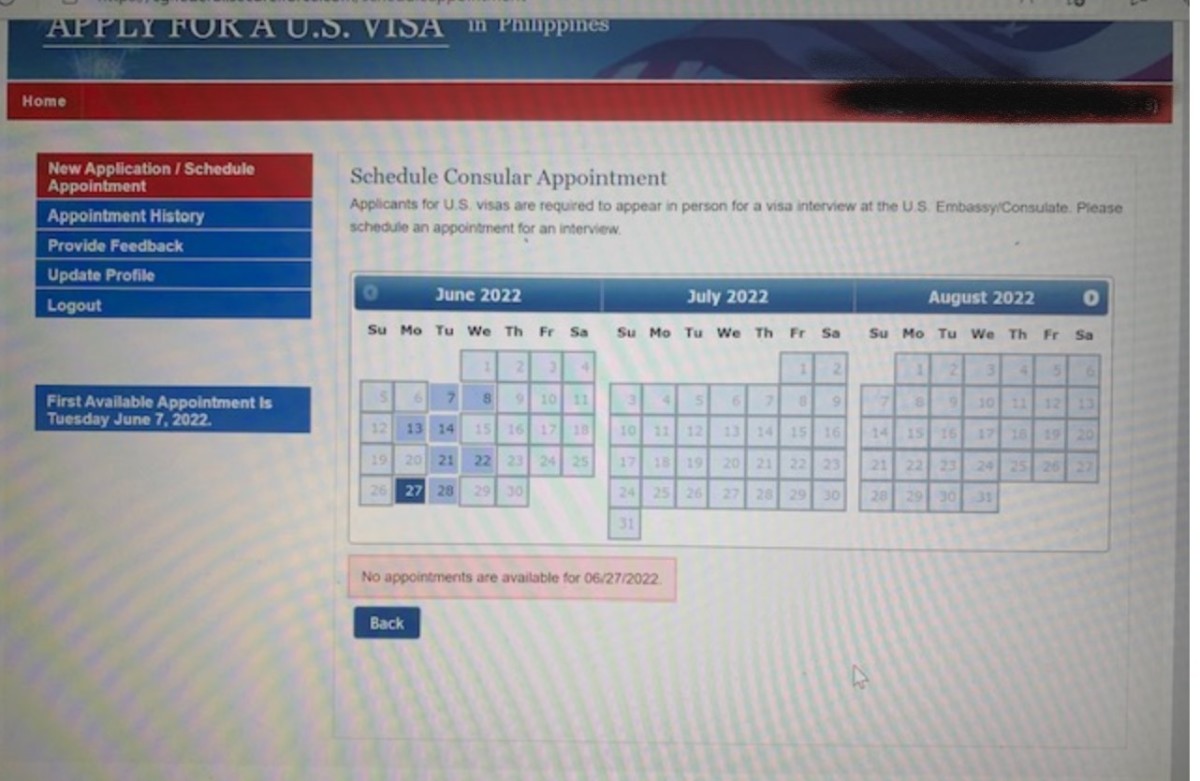Send Him Back - Donald Trump and Immigration

Running the Race With One Foot on the Ground and the Other in his Mouth
Donald Trump has very publicly shared his opinions on immigration and his desire to send immigrants back to their countries of origin. He has made no secret of his desire to send Mexicans back to Mexico because they are bringing in drugs from the cartels, bringing in disease, and he claims they are using the United States as a “dumping ground” for their criminals and lower class citizens. In a speech given in June of 2015, he stated that “The Mexican Government is forcing their most unwanted people into the United States. They are, in many cases, criminals, drug dealers, rapists, etc” (businessinsider.com). He has now included Syrians on his list of immigrants to send back. Trump declared on September 30th that Syrian refugees will be sent back to Syria if he wins the presidential election because it is a possibility that this is a tactical military maneuver to implant an army of 200,000 refugees who plan to cause problems. His declaration was met with cheers and accolades.
These accolades trigger so many fears and worries among those of us who do not support Trump, those he is targeting to be deported, and those of us with a modicum of common sense. According to CNN, support for Trump has reached 32% of voters. And as I look at these stats, I wonder how many voters are educating themselves before they vote, and how many are basing their vote on tradition, ignorance, racism, or a blind, deaf, and dumb following of their families, pastors, or friends. I would like to propose that instead of sending immigrants back, we just send Trump back.
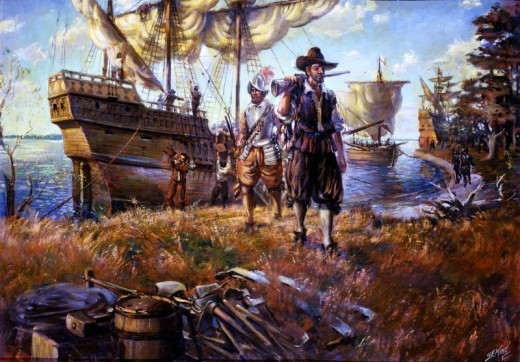
Coming to America
America is a land of immigrants. We all know that. We’ve all heard it. And most of us can trace our families back to other lands and their shores. So, how did people come to America and why? The original settlers, coming from Spain and England, came to America to conquer the land and expand their home nation’s boundaries in a greedy desire for more land, gold, treasures, and the possibility of more goods to trade and export. The establishment of colonies and outposts was meant to “demonstrate English power and influence” and to “spread Christianity and a European definition of civilization to the native people” (APHistoryUSnotes.org).
Greed. Pure, unadulterated greed brought settlers to a land unowned, but inhabited by The People. More land, more money, and more resources were a tantalizing prospective for world leaders who had something to prove. All for the sake of the home country’s monarch being richer, more powerful, and more resourceful, white pioneers conquered the frontier and its inhabitants. It is the world’s oldest game “I have more than you-ou have!” Within this need for land and resources, individuals came as well.
2016 Election
Who do you think would be an excellent president for 2016?
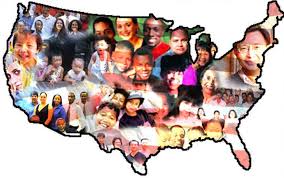
From Whence They Came?
Let’s begin with the Brits. England wanted to extend its frontiers in the 1400s. More British came as settlers: some to govern the New World, others for the adventure, and some in the service of the King to establish order, grow crops, and show their dominance and ownership of the new land. And yet, more still came to America, as indentured servants who were escaping debtors prisons, poverty, and hunger. Some were prison inmates and thieves and poor people became cheap labor for the colonists. In the 1900s, war brides were the next incomer into the States, but by this time, more Brits were emigrating to Canada and Australia because of better economic opportunities and more favorable immigration policies.
In the 1520s, the French came to colonize America in the hopes of extending French borders and gaining land and wealth. France established five French controlled colonies in an effort to prove to England that they were also a dominant nation. The French who came in the 1600s arrived to set up military control over New France in Canada, Arcadia, Plaisance, Hudson Bay, and Louisiana. Later, in the 1800s, more French entered the US during the Potato Blight and to evade intimidation from the backlash of the February Revolution.
In the 1560s, Filipinos working on Spanish galleons first encountered the New World’s ports. In the 1760s, Filipinos settled in Louisiana, and in the 1780s, Los Angeles. Under Spanish control, the Philippines explored alongside the Spanish. In 1898-1903, the American-Filipino wars established freedom from Spain, but under American control, 2 million Filipinos over the age of 10 were executed to ensure loyalty to their new governance.
Africans came to America unwillingly in 1619 when slavery became legalized and colonists required free labor. There was no choice to immigrate for these captured people. By 1790, 3,199,355 white settlers were counted in the census with 694,280 slaves. One quarter of the population was a slave, and 100% of that quarter was not here of their own volition.
In the 1820s, the Norwegians were the immigrants of the hour. A large number were Quakers who were seeking relief from the persecution in Norway. Others came for personal and economic reasons, while others came seeking the cheap and fertile farmland that they could not attain in Norway. Overpopulation was overcrowding Norway’s farmland and progenitor laws made it impossible for younger sons to inherit land, so the Norwegians made their way to America for the chance to farm and because craftsmen wanted a more diverse market. America was seen as the land of opportunity. Poor farmers from India also arrived in the 1820s.
In the 1850s, the hungry Irish came, leaving behind a fallow land where their potato crops had failed and the rich were reclaiming their land from unsuccessful farmers. At this time, the Chinese also started coming into the country. The Chinese wanted economic opportunities that they could not attain in China and the California Gold Rush in 1849 was a draw for workers. When the Chinese arrived, they were cheap labor for the Transcontinental Railroads and lived in Chinatowns where they were reviled by whites and treated abhorrently. The Japanese also came in the 50s looking for trade opportunities, for peace, for prosperity, for better farm land, and looking towards a brighter future for their children. These first Japanese immigrants were illegals and immigrated to Hawaii to work on plantations. The Germans joined the migration as they fled civil unrest, severe unemployment, hardship and poverty. Polish and Russian Jews were amongst the large number of international immigrants in the 1850s. They were fleeing the pogroms after the death of Czar Alexander II. In the 1880s, the Italians came in an effort to leave behind rural poverty.
Some say Mexicans have always been in America. Our fluctuating borders make it hard to determine who came when, and why. In 2007, a massive recession in Mexico sent a large number of Mexicans into America. Families seeking a better life or better educations, families seeking escape from drug cartels, and men looking for work made up a large portion of those entering the country. Statistics have estimated that 50% of these immigrants are illegals and the majority do not have high school diplomas. By 2015, the numbers of Mexicans, legal and illegal, are dropping.
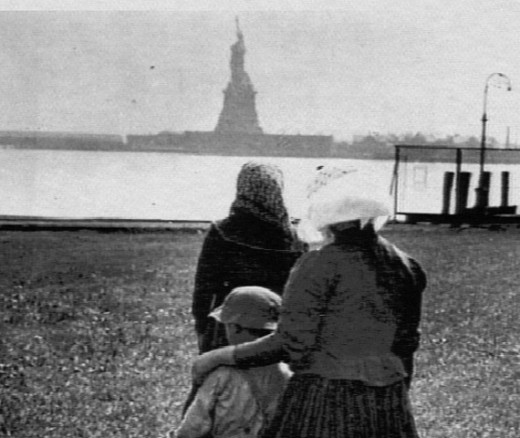
Choosing Life
The standard of living from overpopulation, class systems, poor economies, and poor living conditions were all reasons for immigrants to pursue life in the New World. As early as the 15th century, people seeking better lives and even the ability to live, left their natal lands for a chance to live, survive and thrive. The Jews first came to the New World during the Spanish Inquisition, when Spain sought to rid its country of heretics of Jewish and Muslim faiths. The choice was conversion or death. They escaped for their lives. They also sought the religious freedom to be Jewish.
In the early 1800s, incomers from England stormed the United States seeking life, liberty, and happiness as they sought to escape poverty and find a class-less system with greater opportunities and more equality. The 1820s brought a surge of Serbian peasants looking for work and wealth. Around this time, poor farmers from India came seeking opportunity. In the 1850s, the potato famine in Ireland brought a flux of Irish immigrants. In 1878, Syrians and Lebanese Muslims came in search of greater economic opportunities and took up working in fields where heavy manual labor was expected. They took jobs in sweltering environments where white people were unwilling to work because of the heat.
In Burma/Myanmar, Civil War broke out in 1948 between the Burmese and the ethnic minority groups: the Shah, Wah, Kayah, and Karenni. The Burmese military forced the tribal groups off their land and property and preached propaganda that the Karenni were bringing in Western religions and ideals and were polluting the fatherland. Karenni people were forced into refugee camps in Thailand where they encountered another brand of racism and the imprisonment of not being allowed out of the refugee camps. Bosnian Serbs immigrated during World War I and World War II to avoid nationalist fervor, a dictatorship, military governors and ethnic oppression. In the 1960s, the Burmese government shut down universities and academic professionals began their journey to American in an effort to continue their educations. From the time of Burma’s Civil War, that has lasted until 2013, Burmese and Karenni immigrants have come to America for opportunity, for life, for religious freedom, and more importantly for education as the Burmese government frequently changes their minds about schools and universities being open or closed.
In the 50s and 60s, Cubans took flight in an effort to escape the lacks of freedoms imposed by tyrant Fidel Castro. Facing imprisonment or execution for speaking up against the government and political persecution, they came to America. Living conditions in Cuba were horrendous under a communist regime and the economy was in a decline. An interesting factoid: Among latinos in America, Cubans have the highest rates of graduation.
The 1950s also brought a wave of Haitians to America as Papa Doc’s reign of terror forced people to submit or risk execution. Approximately 500 refugees became permanent residents, but the majority of Haitians returned to Haiti. Papa Doc (Jean Paul Devalier) was a paranoid tyrant who ruled his people with the fear of voodoo spells, and spiritual and physical death. He would randomly execute his closest friends, advisors, and supporters on the rare chance that ONE of them may be a dissenter and to send a warning to the others that they were being watched. Death by firing squad, a head on a pike in the market place as a warning, extreme poverty, Haitians were afraid to even whisper a dissenting thought. Papa Doc led the country into financial ruin. When he finally died, Baby Doc had been declared president for life and continued in the footsteps of his father. In the 1970s, a larger wave of Haitians came to America. It took four coups, several fake elections, immense poverty, corrupt government, and numerous Human Rights violations to finally end his reign.
In the 1970s, the first influx of Vietnamese urban, educated professionals, and military personnel came to America, followed by the poorer “boat people” who were less educated, ethnic Chinese trying to get away from Vietnamese persecution. In the 80s and 90s, the Bui Doi and their mothers came in an effort to rejoin family with their American fathers.
In 2011, an anti-government demonstration led to full blown Civil War in Syria, affecting 11 million civilians and killing 220,000 Syrians. It is estimated that 50% of the casualties were civilians who were not involved in the fighting. Frequent bombings, lack of food, a lack of medical care, and homelessness rampantly affected these people. Fifty percent of those affected are children. Of these 11 million refugees fleeing for their lives, some are Christian, some are Muslim, but religion should not matter here. They are all seeking homes, lives, and safety.

Choosing Liberty
Numerous worshippers have fled to our American soil in a quest for the freedom to worship as they will. In the 1500s, the Puritans wanted religious freedom from the Church of England; French Huguenots settled in Florida to escape persecution at the hands of the Catholics; and the Dutch Mennotites came seeking religious freedom. The Jesuits from England and Scotland, the Salzburg Lutherans, the Irish Protestants, the Quakers, the Puritans were among the many pilgrims who made America their home to exercise freedom of religion.
When did the Muslims get here? Historians speculate that Muslims arrived as early as the 12th century when the Moors were kicked out of Spain and somehow traveled to the Gulf of Mexico. In the 16th century, Moorish Muslims were guides to the Spanish explorers. An estimated 10-15% of African slaves identified as followers of Islam in the 17th century, but were forced to believe in secret, and many were compelled to convert to Christianity. Muslims did not necessarily arrive for religious freedom. The slaves had no choice in their coming to America, and the anti-Muslim sentiment was high in the early days and continues into today. In the 1870s, Muslims from Syria and Lebanon arrived, but Muslim communities did not begin building until the 1930s and 40s. Palestinians, Iraqis, and Egyptian Muslims immigrated in the 1950s and in the 1960s Muslims from Southeast Asia, Africa, and Latin America joined their multinational brothers and sisters. While Muslims may not have come here seeking religious freedom, ironically, the land of the freedom of religion has not embraced Muslims wholly, nor felt comfortable with Muslims practice their faith. Those who came seeking freedom have denied that same freedom to those who claim Allah.
In the 1930s and 1940s, European Jews were among the religious people seeking safety and freedom when Kristallnacht shattered their synagogues and churches and they faced vast persecution, harassment, exile, inflated taxation, egregious crimes against them, and degradation. The Holocaust was the catalyst that sent them into the US for both their lives and their liberty.
In the 1990s, Catholic Croats and Bosnian Muslims fled Bosnia-Herzegovina. In a peaceful protest to declare independence from Yugoslavia, Bosnian Serbs open fired on the protestors, starting a Civil War that lasted for several years. The Bosnian Serbs wanted an ethnic cleansing of Bosnia and the Croats and Muslims were forced to flee or die.

Choosing the Pursuit of Happiness
America never promised to be a land of opportunity, a land of riches and wealth, and a golden goose for those who stepped foot on to the red, white, and blue. People came for life, for liberty, and to pursue their dreams, whether getting away from a monarch, a dictator, a caste system, civil unrest, poverty, or persecution. Each person came seeking a better way of life.
In the 1900s, Filipinos moved to Hawaii to work on sugar plantations and wanting a better life. They did not plan to stay, but planned to raise money and go home wealthy. Unfortunately, America’s low wages for migrants made leaving and providing for a family back home very difficult. During the same timeframe, uneducated males from Korea emigrated to Hawaii’s sugar plantations in search of opportunity and wealth in 1903-1905. In 1910-1924, 1000 Korean women were allowed to enter the country as “picture brides”, wedding the Korean workers who were already present.
The next wave of Filipinos arrived in 1940 to fight alongside America against the Japanese. In 1951, the Korean War catapulted young women and children of military men to make the move. Refugees, professionals, students and war orphans came looking for a better life, more education, and a place to set down roots with their families. A high number of the Koreans entering were educated and willing to work. They left a country where a military dictatorship put lives at risk. And in the 1960s to now, the Philippines is sending its best and brightest, its engineers, doctors, lawyers, and other professionals, like inventor Agapita Flores, labor organizer Larry Dulay Itliong, and various entertainers like Prince and Nia Peeples.
In 1965, the Immigration Nationality Act removed some of the quotas for who could enter the U.S. and allowed people to come into the country for employment reasons. India’s students and professionals started arriving. India sent its brightest and its best to sit in university seats, design engineering wonders, and operate in hospitals around the country. India has the highest statistics of skilled workers coming to America.

America's History of Immigration Law
1790 Naturalization Act – free, white people may be citizens
1795 a 5 year residency requirement to becoming a citizen (for free, white people)
1798 Alien and Seditions Act – the president can deport anyone he deems dangerous
1808 Slavery is legalized
1831 Pennsylvania legalizes bilingual schools for German/English studies
1841 The Treaty of Guadalupe-Hidalgo – 80,000 Mexicans are permitted to be residents
1865 – The 14th Amendment gives citizenship to former slaves and their children
1870 Naturalization Act – white people and Africans can be citizens
1882 – Chinese Exclusion Act – no Chinese may immigrate to America for 10 years
1882 – Immigration Tax imposed
1885-1887 Alien Contract Labor Laws prohibit employers from hiring foreign labor (except for domestics and skilled industry workers)
1901 Anarchist Exclusion Act – The government can prohibit immigration based on a person’s political perspective
1907 Immigration Act – An American woman who marries a foreigner will lose her citizenship
1913 Alien Land Law – Asians cannot own property
1917 – Requiring a passport and a literacy test
1922 Cable Act – overturns the 1907 marriage act, unless she marries an Asian
1923 – Indians declared “non-white” and the yellow peril becomes official
1924 Johnson-Reed Act – maintains the cap on Asian immigrants and sets a cap of 2% for Europeans
1934 Tydings-McDuffie Act – Filipino Independence strips Filipinos of American national status and restricts them from coming to America
1940 Alien Registration Act – requires all aliens to register with the government and get fingerprinted. Koreans are noted as subjects of the Japanese empire.
1942 Filipinos reclassified as American citizens so they can join the military and the U.S. government orders 112,000 Japanese Americans into 10 concentration camps around the U.S.
1943 Guest Worker/Bracero – beginning of Mexican negotiations (lasts until 1964)
1944 Supreme Court says it is constitutional to leave the Japanese Americans in the internment camps
1945 War Brides Act – allows European women who have served with the U.S. Army to come to America with their American husbands
1946 Luce Celler Act – ends Asian discrimination and allows a few to immigrate
1948 Displaced Persons Act – permits displaced Europeans to come to the U.S.
1950 Internal Security Act – green cards
1952 Immigration and Nationality Act – revises the quotas
1954 Operation Wetback – Border patrol, local police, and vigilante groups round up 80,000 Mexicans and Native Americans and non-Mexican Latinos who “look Mexican” and deport them to Mexico. 500,000 Mexicans flee America under duress.
1965 Nationality Act Amendment – more quotas and caps
1968 Immigration Act and Civil Rights Laws – are ratified to abolish racial, religious, and gender discrimination
1976 Eliminates special treatment for Western Hemisphere countries
1980 Refugee Act – redefines “Refugee” using United Nations definition
1986 Immigration Reform and Control Act – penalizes employers who knowingly hire illegals, yet 3 million illegals receive Amnesty.
1988 Redress Act – a $20,000 compensation is given to surviving Japanese Americans who lived in the internment camps
1990 Immigration Act – increased quotas and allowed more visas for education and hiring of skilled workers
1990 Antiterrorism and Effective Death Penalty Act, Illegal Immigration Reform, and Immigrant Responsibility Act – jail and deportation for illegals
1994 Proposition 187 – exclude illegals from welfare and public education (this proposition was thrown out)
1996 Illegal Immigration Reform and Immigration Responsibility Act – strengthened the U.S. borders, made it harder for refugees to get asylum, required income requirements for those who would sponsor immigrants, and required citizenship for someone to gain public assistance
1997 Congress restores health and welfare to elderly illegals if they had gotten benefits in the past
1998 Agricultural Research, Extension, and Education Reform Act, and the non-Citizen Clarification and Other Technical Amendments Act – reinstated some benefits to most immigrants
2001 USA Patriot Act – Immigration now with the Department of Justice and Homeland Security
2007 – Comprehensive Immigration Reform Act (still in hot debates)
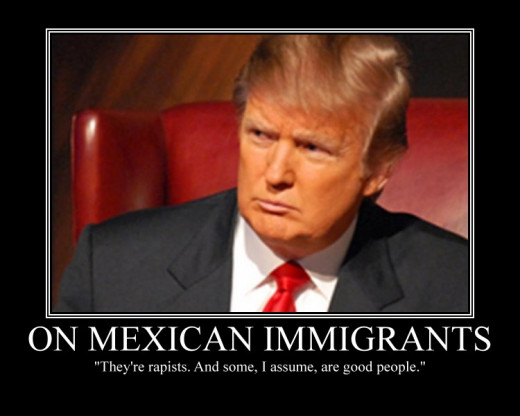
Trump and His Antecedents- The Solution
Trump’s family’s surname was actually Drumpf, but was changed when his German side of the family emigrated to the United States. His father, Frederick Christ Trump, was born in America. His mother, Mary Anne MacLeod hailed from Scottish roots. Scots Immigration was an interesting journey comprised of political prisoners of rebellions, paupers, petty thieves, criminals, and victims of crushing poverty. Scottish people who left were trying to escape from a class system that left little opportunity to get ahead. The first slew of Scots coming into the New World arrived between the 1600s and 1700s and were fleeing the Cromwellian Civil War, the Jacobite rebellions,, and the Highland Clearances.
Now many supporters of Trump claim they like him because he is not a politician and he “tells it like it is.” These supporters excuse his racism, his cycle of bankruptcies, his myriad of ex-wives who accuse him of beastly and humiliating sexual trauma, and the plethora of stupid comments that have come out of his mouth since his ran began. One would think there would be a better candidate who was not racist, who was fiscally responsible, who was respected by women, and who was capable of intelligent and wise conversation.
I would like to posit that we consider allowing the Mexicans who are already in the country, whether by legal or illegal means to stay; however, they need to be involved in some sort of meaningful enterprise, whether employed or volunteering. I would like to posit that we allow Syrians and other refugees to find solace in our communities. And I would like to posit that we just send Trump back, to either Germany or Scotland, because frankly, I don’t think America wants him anymore.
